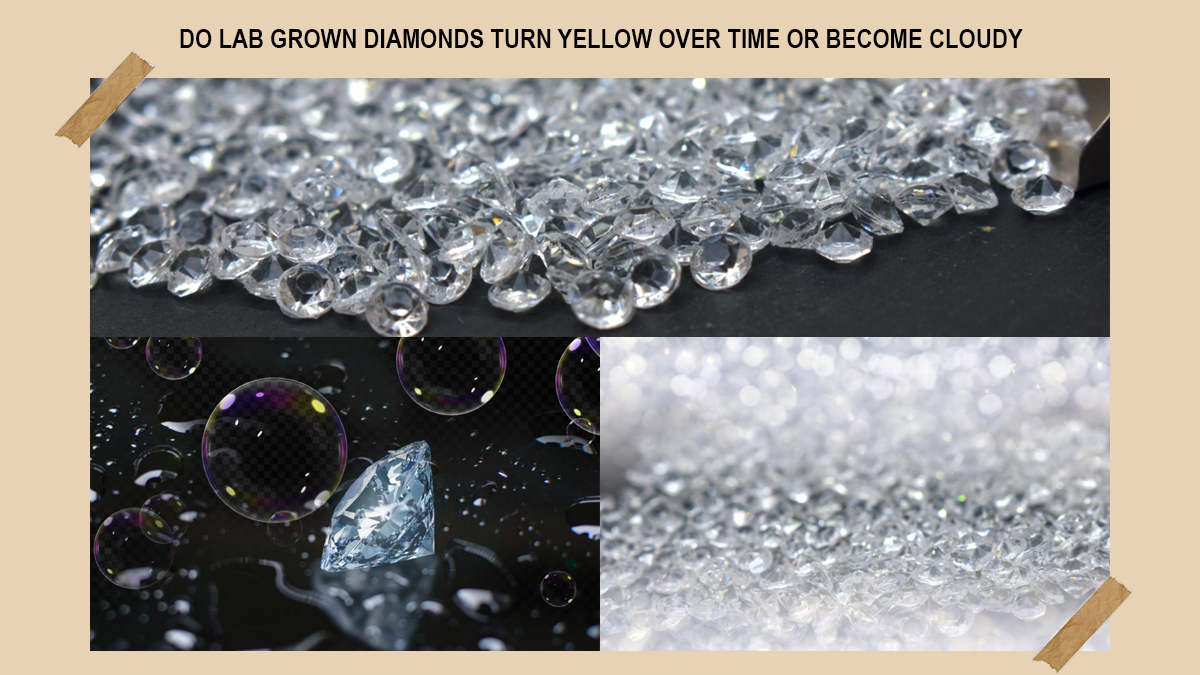Diamonds come in various colors, which indicate their value. Generally, diamonds which have a dull brown or yellowish color are not desirable, unless you don't mind. The general idea is that the clearer the diamond, the more precious and captivating it is. This is why color should not be overlooked while buying a diamond.
You can compromise on the lab grown diamond color grade to get a bigger diamond with a better cut and clarity. However, you must know how to do this correctly. This article provides guidance.
Much has changed with the advancement of technology. Diamonds can now be sputtered to deposit a thin film evenly on their surface. The thin film is only a few microns thick. Yet, it can alter the color of the diamond to any uniform color you desire.
One could believe that lab-grown diamonds are flawlessly white diamonds, however lab created diamonds have defects as well. Advancements in the laboratory environment have enabled the production of laboratory diamonds with a wide range of colors and clarity levels. This is similar to natural diamonds. Some labs have the capability to create colorless grades such as F, E, and D.
In contrast, other labs produce even lower grades, such as J, I, and H.
The HPHT - (High Pressure and High Temperature) technique mimics natural circumstances, resulting in higher grade diamonds. No post growth treatment or color enhancement is needed to improve the appearance of hpht diamonds.
This means there is no need for additional steps after the diamonds have been grown. CVD diamonds require post growth treatment to improve their color. This is because no one wants brown or grey diamonds.
HPHT treatment is probably the most well-known commercial process for changing the color of a diamond. Good process control can help to modify the hue and saturation of lower quality diamonds. HPHT (high pressure high temperature) is an effective way to achieve this.
For example, heat and pressure treatment can transform a yellowish diamond into a fancy color diamonds, increasing its attraction. The same approach can be used to transform brownish diamonds into colorless stones by making certain changes to the process formula.
There are many misconceptions about the life span of lab made diamonds vs. mined diamonds, in addition to durability. Lab diamond will not fade or lose its color over time. It is just as strong as naturally mined diamonds, with no breaking, discoloration, or fading.
The diamond was created in a laboratory. This does not make it any less durable. Also, It should not be compared with diamond simulants like cubic zirconia.
Does the color grade scale affect the price?
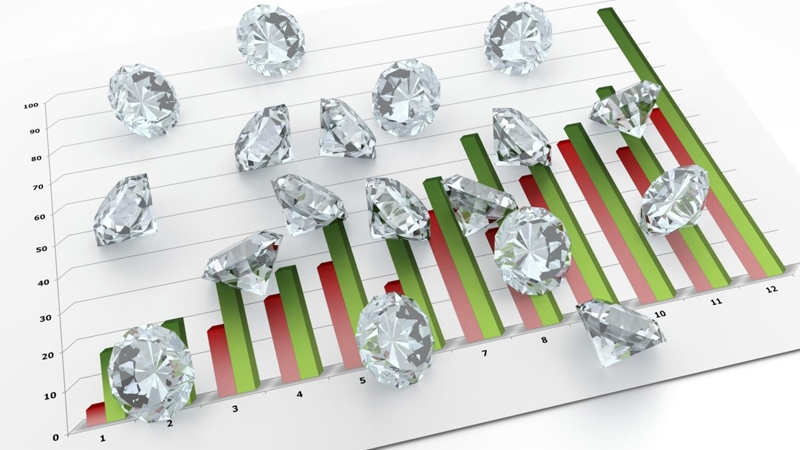
Diamonds are graded based on four basic characteristics: carat, cut, clarity, and color. These properties are collectively known as the "four C's" of diamonds. All follow the colorless diamond pricing rules; however, the color grading is quite distinct.
There are approximately 30 base colors that may be combined with one another to produce over 200 different color combinations. A laboratory grader examines the base color and any secondary colors to identify the specific name of the color. A green diamond with touches of blue, for example, would be referred to as "bluish green."
A grader will also look at the hue, tone, and saturation of the diamond's color to assess its Fancy Color. Grading is determined by the intensity of color. It ranges from faint to fancy deep, in order of least to most saturated.
The more intense and deeper the color, the more valuable the diamond. Colored diamonds are costly because they are rare. However, lab-grown colored diamonds offer a more affordable alternative.
The colorlessness of a diamond enhances its rarity and value. However, doing so with the naked eye can be almost hard.
That is why the GIA created an internationally recognized system for rating diamond color. The Diamond Color Scale is used to identify the color grade of a diamond. The less expensive the diamond, the lower the color scale.
The Lab created diamonds color Diamond Color Scale is used by gemologists to color white diamonds. This is a scale from D to Z, which means that white diamonds can have 17 different color grades.
D diamonds are the finest and most colorless. These are the most difficult to find in nature, making them the rarest and thus most valued. As a result, they are the most valuable diamonds. Diamonds of the Z group, on the other hand, have a yellow hue.
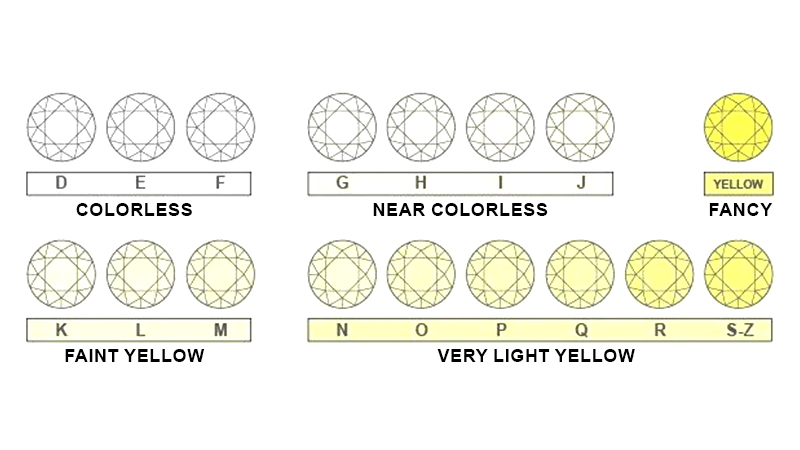
D to F Colorless Diamonds: When looking closely at diamond colors, it might be difficult to detect the differences between groups. D, E, and F are colorless grades. However, slight differences can reveal the diamond's quality and price.
Diamonds with a D, E, or F grade are completely colorless. The minor changes could only be seen using an electric colorimeter. The costs of colorless diamonds are comparable, regardless of the D, E, or F grade.
G to J diamonds may have traces of color, but it is difficult to notice with the naked eye. This is especially true for those who are not familiar with diamond color grading. G to J diamonds, on the other hand, are substantially less valuable than D to F diamonds.
The grades of diamonds with a faint color range from K to M.
These diamonds feature a brown tint or light-yellow hue, which is popular among yellow diamond fans. Colorless and virtually colorless diamonds are more valuable than faintly colored diamonds.
Customers enjoy the contrast of delicate colors and the strength of diamonds in diamond engagement rings. These rings are available in rose gold, white gold and yellow gold. Thus, faintly colored diamonds are becoming increasingly popular.
Because there is definitely less demand for these diamonds, they are acquired and sold at a reduced price. There is a significant price difference between a J and a K diamond.
A diamond color palette from N to R has distinct hues. These hues are light in nature. This can have a yellow or brown hue to it. These diamonds are among the least in demand, hence the cost of purchasing or selling is quite low.
Light Color S to Z: These diamonds have the most distinct yellow or brown color. Diamonds beyond the U color are in higher demand than lower graded diamonds. This is because they resemble Fancy Colored diamonds.
How Long Will Lab Grown Diamonds Last?
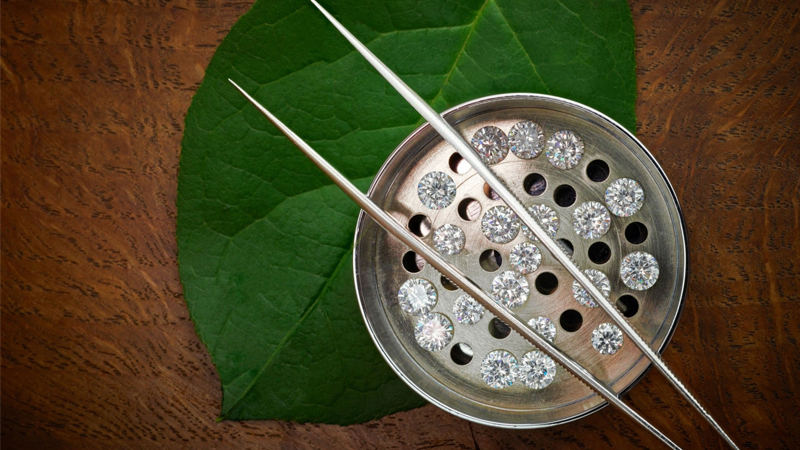
One of the most common questions about lab-grown diamonds is how they age in comparison to natural diamonds. A diamond's ageing process is determined by its internal structure as well as the external factors to which it is subjected. Natural diamonds originate deep within the earth's crust over millions of years. In contrast, lab-grown diamonds are generated in a controlled setting in a couple of weeks.
Lab diamonds are extremely strong and long-lasting. In addition, they are less likely to chip or break than natural diamonds. This is because lab grown diamonds are formed in a controlled environment, allowing for more precise control over the diamond's structure.
Conclusion
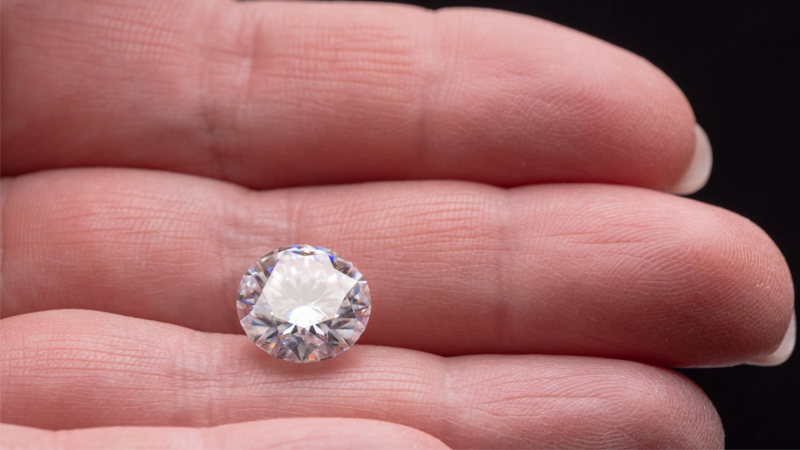
Colorless diamonds are the highest and best diamond color grade. D color grade diamonds are also the highest and best diamond color grade. This is due to the fact that D color diamonds are the rarest and most valuable.
D color grade diamonds are highly regarded by industry standards. However, they may not be the best choice for an engagement ring. Colorless diamonds might not be the best option for a yellow gold setting. This is because the setting could cause the diamond to take on a tint.
The color of a diamond will change when exposed to UV light. The color of a diamond is graded by comparison.
It is placed face down on a white background. It is compared to a master set of diamonds to determine its color. "The fluorescence color of a diamond under UV light is most commonly blue."
Please keep in mind that most gems do not glow. However, lab-grown diamonds may fluoresce in a variety of colors.

